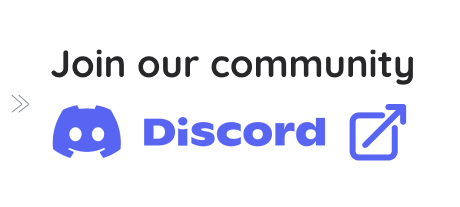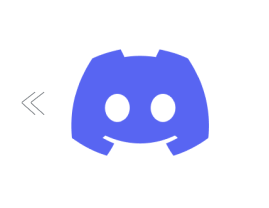Battle of AI Bots: ChatGPT versus Google Bard
Artificial intelligence (AI) chatbots have become increasingly popular in recent years, with many tech giants investing heavily in developing their own versions. Among these are ChatGPT and Google Bard, two advanced language models that have gained attention for their remarkable ability to generate human-like responses. As the world becomes increasingly reliant on artificial intelligence, these two bots have been making waves in the industry with their ability to hold engaging and realistic conversations. In this article, we will be pitting them against each other to see who comes out on top in the battle of AI bots. So, buckle up and get ready for an exciting ride!
What is ChatGPT?
ChatGPT is the third model in OpenAI's GPT (generative pre-trained transformer) series and one of the world's largest language models.
ChatGPT was trained on a vast dataset with 175 billion parameters, making it one of the most powerful language models on the market. It processes user input and generates human-like answers using neural networks. This provides it a unique set of skills, such as the capacity to deliver accurate answers, make suggestions, answer questions, and even produce fascinating tales and essays.
ChatGPT has a wide range of possible applications, including education, customer service, entertainment, and mental health assistance.
ChatGPT, although being such a powerful tool, does have certain limits. For example, when confronted with difficult or delicate issues, it may provide erroneous, disrespectful, or inappropriate replies. This is mostly because it is trained on data from the internet, which has biases that impact the model's output.
Check out also: ChatGPT versus Bing Chat
What is Google Bard?
Google Bard is a conversational AI service that works in the same way as ChatGPT. The model was announced on February 6, 2023, and is now available for public access.
The model is driven by Google's Linguistic Model for Dialogue Applications (LaMDA), which was based on a transformer model, similar to GPT-3. Unlike the GPT series, which uses training data to create replies, Google Bard gets all of its output data from the internet. This makes it ideal for applications where users want up-to-date information.
On the flipside, Google Bard had a shaky debut, answering a question wrong. But, because it is still in development, it may become more accurate as developers work out the problems.
Google Bard offers a wide range of possible applications, although it lacks some of the skills displayed by ChatGPT, such as the capacity to produce stories and essays. This methodology, on the other hand, is largely aimed at simplifying Google searches by enhancing results and presenting responses in a conversational manner.
Distinguishing Google Bard and ChatGPT
Indeed, there are many similarities between Google Bard and ChatGPT. They answer inquiries in a conversational tone and greatly simplify online searches. They do, however, have several distinctions. Everything from their operational architecture to how they obtain their data distinguishes them. These are some of the key distinctions between the two.
Cost and availability
ChatGPT has been in operation for almost two years. It began as a free model, but OpenAI just unveiled a subscription version for $20 that includes priority access and quicker speeds.
There is still little information on Google Bard's monetization, but there is a good chance that the model will remain free for some time after it is made public.
Google Bard is now only available to a restricted group of trusted testers, who will verify its efficiency and accuracy before making it available to the general public. ChatGPT, on the other hand, already has a large number of public users and is still growing.
Accuracy
ChatGPT has a relatively good track record of providing accurate responses. Sadly, the model still gives wrong or biased responses in a significant proportion of cases. Moreover, ChatGPT is restricted to pre-2021 data that precedes its training data. This implies that based on current occurrences, the model can provide responses or recommendations.
Google Bard, on the other hand, gets all of its information from the internet in real time. This increases the likelihood of it giving information that is relevant to current trends and new findings. However, the model had a rocky debut after answering a question incorrectly.
During the announcement, someone asked Google Bard, "What new discoveries from the James Webb Space Telescope can I tell my 9-year-old about?" The model responded with three bullet points, one of which indicated that the James Webb telescope took the first photographs of a planet outside the solar system.
This information is false because the first photos of an exoplanet were acquired in 2004, decades before the James Wedd telescope was published, according to NASA.
Features
Both models share several characteristics. As conversational AI models, they allow you to ask questions and then deliver the best possible answer based on the available facts. You may also ask follow-up questions or start a new chat on a different topic in either style.
In terms of question responding, Google Bard has the advantage since it delivers more context to replies based on current data. Yet, depending on its characteristics, ChatPT outperforms it in terms of the number of use cases.
ChatGPT, unlike Google Bard, can create a broad variety of content, such as articles, essays, product descriptions, and much more. When given enough knowledge, it may also produce code.
It's not a stretch to think that Google Bard has some of these characteristics, but we haven't seen them demonstrated or even discussed by the folks in charge of its development.
Capabilities for Integration
Both approaches' monetization and profitability are strongly reliant on their ability to integrate with other systems. Consider, for example, ChatGPT. The concept has already been widely used by Microsoft products such as Edge, Bing, and Teams.
Google has also just released an upgraded version of GPT-3.5, which will power Bing. Instead of querying the search engine box, this enhancement will allow users to converse with the search engine. There is also speculation that ChatGPT will be incorporated into Opera Browser.
Google says its AI chatbot will be integrated into its search engine. Google Bard, like ChatGPT and Bing, will let users to search inquiries using the chatbot rather than the usual search box. Google also stated that it will let third-party developers access to the chatbot, which might lead to a greater range of use cases.
In conclusion, the battle of AI bots between ChatGPT and Google Bard is an exciting development in the world of artificial intelligence. Both models have their strengths and weaknesses, and it's clear that they are advancing the field of natural language processing. Ultimately, the true winner of this battle will be determined by how effectively they can serve their intended users. As these bots continue to evolve and learn, we can only imagine the amazing things they will be capable of in the future. Whether you're Team ChatGPT or Team Google Bard, one thing is for sure: the future of AI is looking very promising.
The Worldwide AI Hackathon is paving the way for the next generation of language models and AI innovations. With talented contestants using cutting-edge technology, the future looks bright for the field of generative AI. It's only a matter of time before we see new language models emerge that will revolutionize the way we interact with machines and communicate with each other.










